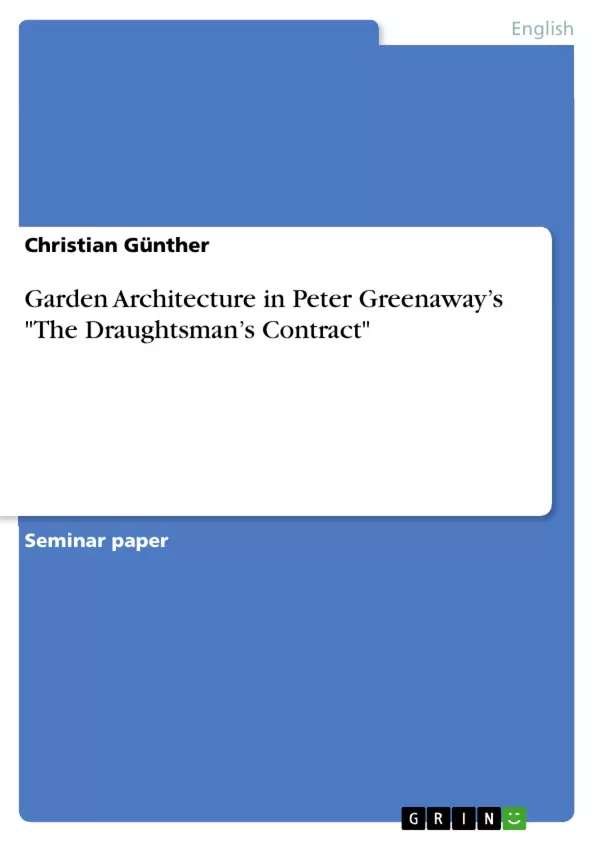Die Arbeit befasst sich mit dem Film "The Draughtsman’s Contract" von Peter Greenaway, analysiert dessen Inhalt in Korrelation mit Paradigmenwechsel der Gartenarchitektur. Insbesonderes Augenmerk liegt auf dem Wechsel des Barockgartens hin zu dem Englischen Landschaftsgarten.
Inhaltsverzeichnis (Table of Contents)
- I. Introduction
- II. Main Body
- 1. Peter Greenaway
- 2. The Draughtsman's Contract
- 3. Garden Architecture and The Draughtsman's Contract
- a. The Gardens of Baroque
- aa. Women as gardens and men as gardeners
- b. The English Landscape Garden
- c. Criticism
- III. Conclusion
- IV. Bibliography
Zielsetzung und Themenschwerpunkte (Objectives and Key Themes)
This work examines Peter Greenaway's film The Draughtsman's Contract, focusing on the historical context of French Baroque, Anglo-Dutch, and English Landscape gardens, their characteristics, paradigm shifts, and iconography. This approach offers cultural insight into the history of garden architecture and serves as a foundation for understanding Greenaway's work as a director of British auteur cinema.
- The historical evolution of garden architecture, particularly French Baroque and English Landscape gardens.
- The relationship between garden architecture and the representation of power, society, and structure.
- The symbolism and allegory embedded in garden designs as expressions of character traits, societal order, and historical perceptions.
- The interplay between men and nature, exploring the paradoxical relationship of creation and dependence.
- The philosophical implications of garden architecture, examining whether gardens can develop meaning.
Zusammenfassung der Kapitel (Chapter Summaries)
The introduction explores the enduring influence of nature on art and introduces the concept of the garden as a purposeful arrangement of natural objects. The work focuses on examining The Draughtsman's Contract through the lens of garden architecture, examining its historical context and allegorical significance. The main body begins by providing an overview of Peter Greenaway's life and career, highlighting his training as a mural painter and his unique approach to filmmaking. The chapter then delves into a summary of The Draughtsman's Contract, introducing key characters and plot elements. The final section focuses on the film's exploration of garden architecture, examining the historical influences on the garden designs, the symbolism employed, and the film's overarching themes.
Schlüsselwörter (Keywords)
This work explores the key concepts of British auteur cinema, garden architecture, Baroque and English Landscape gardens, symbolism, allegory, historical context, and the relationship between men and nature. The analysis of Peter Greenaway's The Draughtsman's Contract delves into themes of power, society, structure, and the philosophical implications of gardens.
- Citation du texte
- Christian Günther (Auteur), 2016, Garden Architecture in Peter Greenaway’s "The Draughtsman’s Contract", Munich, GRIN Verlag, https://www.grin.com/document/373213



